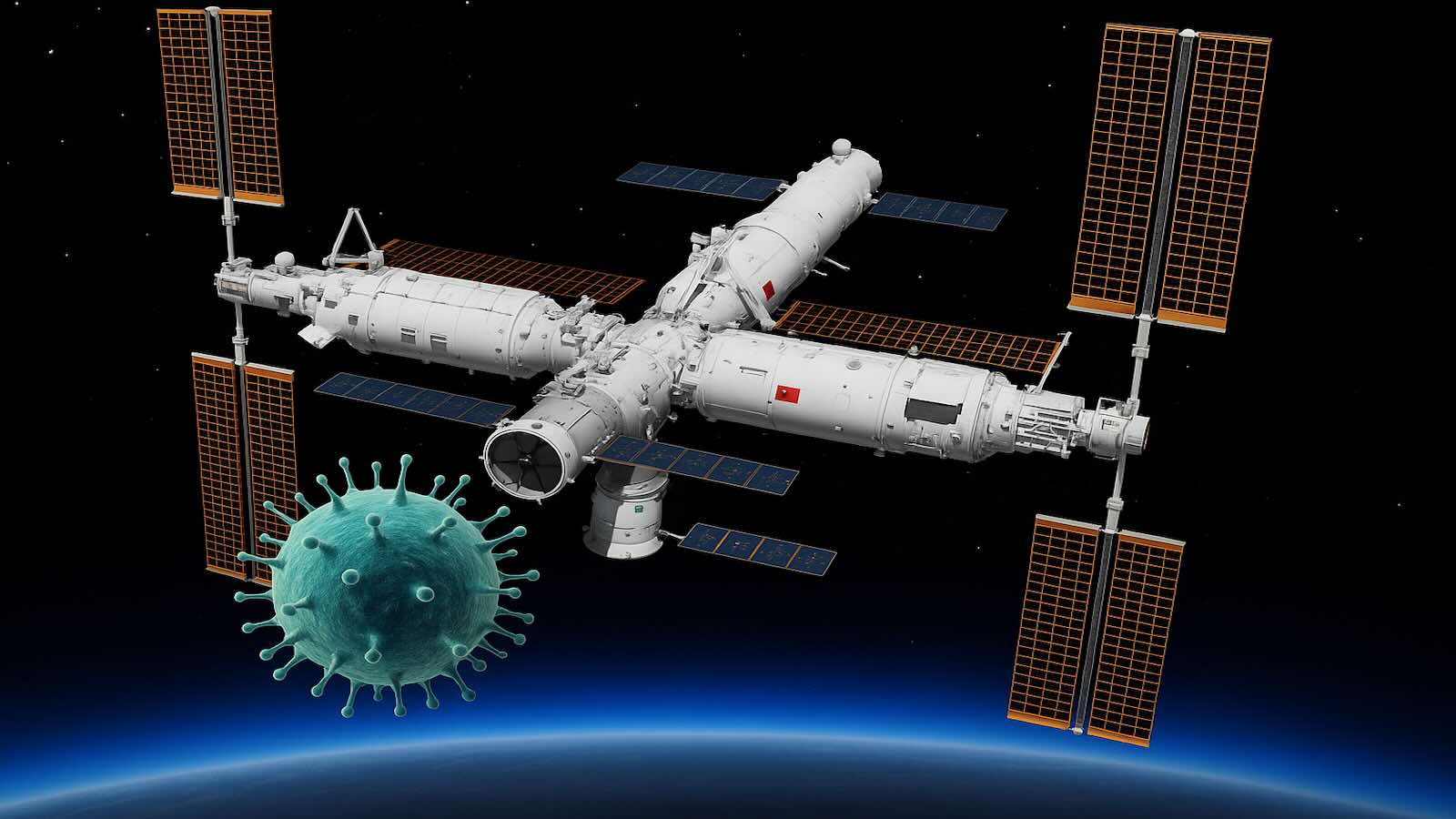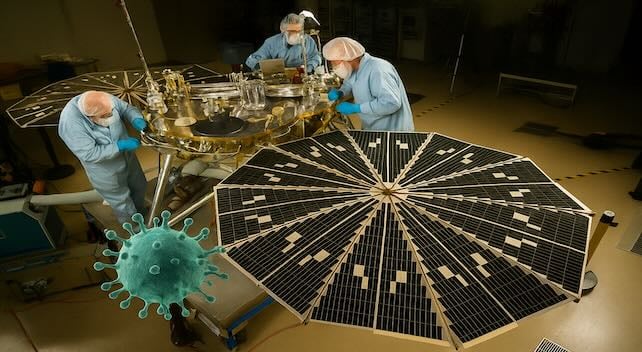A previously unidentified species of bacteria has been discovered aboard China’s Tiangong space station, offering new insight into how microorganisms adapt to space environments. Named Niallia tiangongensis, the bacterium was found in swabs collected from the station’s cabin surfaces by the Shenzhou-15 crew in May 2023. This sampling was part of the China Space Station Habitation Area Microbiome Programme, a research initiative aimed at tracking microbial life aboard the space station.
Researchers from the Shenzhou Space Biotechnology Group and the Beijing Institute of Spacecraft System Engineering led the study and revealed that the bacterium shares traits with Niallia circulans, a soil-dwelling, spore-forming organism formerly classified under the Bacillus genus. Spores are a survival mechanism that allow bacteria to endure extreme environmental stress—making them especially relevant in the context of outer space.
What makes N. tiangongensis particularly interesting is its unusual ability to metabolize gelatin as a source of nitrogen and carbon. This capability helps the organism construct protective biofilms, which act as physical barriers against harsh conditions like radiation and nutrient scarcity. However, this species appears to have lost the ability to metabolize some other energy-rich compounds, suggesting an adaptation process likely shaped by life aboard the space station.
Goodbye to energy dependence – Alaska discovers more than 1,200 TWh hidden under the ice, and the find could change the world
Goodbye Pepsi: Costco makes a major decision that completely changes its strategy with sugary drinks
Microbial Adaptation in Orbit: Surviving Space Through Evolution
The question remains whether N. tiangongensis evolved these traits while in space or if it arrived with them already formed. Either way, its presence underscores the remarkable adaptability of microbes in artificial habitats far from Earth. The closed environment of a space station, coupled with exposure to cosmic radiation and microgravity, appears to drive unique shifts in microbial behavior and genetics.
This finding aligns with previous observations from the International Space Station (ISS), where microbial communities differ significantly from those on Earth—not just in makeup but also in function. Each spacecraft becomes its own ecosystem, influenced by human occupants, onboard materials, and environmental controls. Understanding these ecosystems is crucial, as some microbes can affect both crew health and the long-term integrity of spacecraft components.
The discovery of N. tiangongensis also raises questions about microbial risks. While this specific bacterium has not been shown to be harmful, its relative Niallia circulans has been linked to infections in vulnerable individuals. The possibility of space-adapted bacteria evolving pathogenic traits cannot be ruled out, especially on longer missions where medical resources are limited.
What This Means for Future Missions and Space Safety
The implications extend beyond Tiangong. NASA’s own experiences with bacterial persistence—such as in the clean rooms used to assemble the Phoenix Mars lander—have shown that even the most sterile environments can host diverse microbial life. Dozens of new species were identified in those settings, many carrying genes that support DNA repair and resistance to chemical agents typically used for sterilization.
All this points to a vital truth: total microbial elimination in space settings is unlikely. Instead, we must prioritize understanding how microorganisms behave and change in extraterrestrial environments. This is especially important as missions aim for longer durations, greater distances, and higher risks.
How detonating a nuclear bomb could protect planet Earth
Buys a coal mine for $2 million and discovers metals worth up to $36 billion
In conclusion, the identification of Niallia tiangongensis adds to our evolving knowledge of bacteria in space. These microscopic passengers are not just hitchhikers; they are active participants in the life systems aboard space stations. As humans venture further into space, tracking and managing microbial life will be key to ensuring mission success and protecting crew well-being.
This research was published in the International Journal of Systematic and Evolutionary Microbiology.

